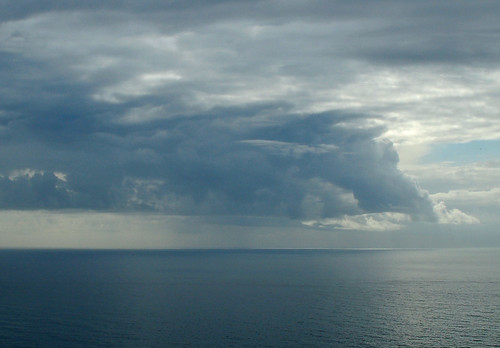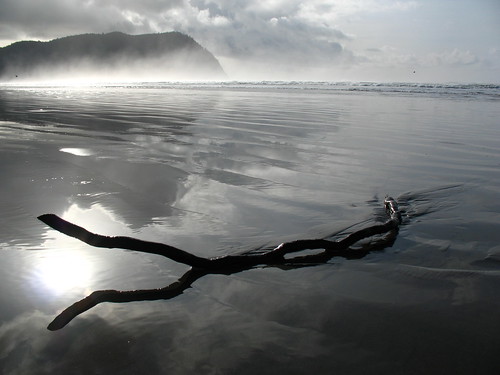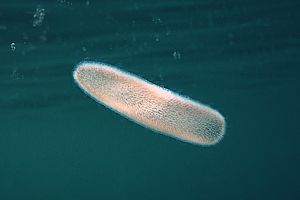
Alas, another correspondent has died. Rest in peace, Amelia, we hardly knew you but we miss you still, your beauty and swooping grace. Consequently, our correspondence has been a little like the
Macropinna microstoma depicted here, tending to "hang completely still in the water."
Species loss is a little like this: voices silenced, never to be heard from again. How we miss the Salp, for example! This contemplative, perhaps sad, fellow here is our new representative at The Salp, but he's not talking. "Mac," as we shall call this silent fellow, is a good observer, having that transparent forehead, so like a space ship, so we will make comments
as if he was as good as talking as he is at looking (but he's not - check out those close-lipped lips).
"The
Macropinna microstoma and it has puzzled ichthyologists since it was first described by Chapman in 1939. Macropinna microstoma, also known as the Barreleye fish, has a fluid-filled dome on its head through which the lenses of its barrel shaped eyes can be clearly seen. The fish lives at a depth of 600-800 metres where it spends most of its time hanging almost completely still in the water." From March 4, 2009, blog about fishes. It continues, "it has long been known that the tubular eyes of the Barreleye are good at collecting light; an adaptation to a life deep down in the ocean where light is scarce. The eyes were however presumed to be fixed and the fish was therefore believed to have a very narrow upwards-facing tunnel-vision. Researchers Bruce Robinson and Kim Reisenbichler from the Monterey Bay Aquarium Research Institute (MBARI) has now changed this notion completely by providing evidence suggesting that this fish can rotate its eyes within the transparent dome in order to see both upwards and straight forward. Robinson and Reisenbichler observed that when suitable prey, e.g. a jellyfish, is spotted, the fish will rotate its eyes to face forward as it turns its body from a horizontal to a vertical position to feed." Apparently, when it is alive (!), its eyes are a lovely green in color. Click here if you want to watch Mac on YouTube. He swims very nicely AND YOU CAN SEE HIS BRAIN!!! YUCK?
 The new head of the National Oceanic and Atmospheric Administration is an Oregonian, Jane Lubchenco. Married to fellow OSU marine biologist Bruce Menge, Lubchenco is no stranger to the likes of Jasper, Amelia, Mac, and our beloved Jackie as well as our divers ocean correspondents on this blog. "While traveling around the country developing the Oceans Commission report, Lubchenco said she heard consistently from people that they want clean beaches, healthy and safe seafood, stable fisheries, abundant wildlife and vibrant coastal communities," says the Jeff Barnard's March 19 interview with Lubchenco on Huffington Post. We all say: Go, Jane, Go.
The new head of the National Oceanic and Atmospheric Administration is an Oregonian, Jane Lubchenco. Married to fellow OSU marine biologist Bruce Menge, Lubchenco is no stranger to the likes of Jasper, Amelia, Mac, and our beloved Jackie as well as our divers ocean correspondents on this blog. "While traveling around the country developing the Oceans Commission report, Lubchenco said she heard consistently from people that they want clean beaches, healthy and safe seafood, stable fisheries, abundant wildlife and vibrant coastal communities," says the Jeff Barnard's March 19 interview with Lubchenco on Huffington Post. We all say: Go, Jane, Go.





